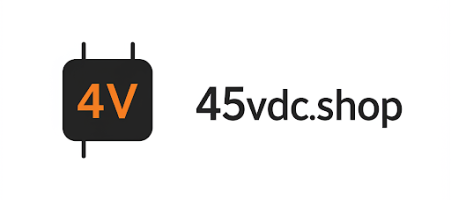This article dives into the possibility of securing an FHA loan just one year after a Chapter 7 bankruptcy discharge, and offers five concrete strategies to improve your chances of approval, even when facing strict waiting periods. We will give you the key, actionable steps to not just hope for approval, but actively work toward it.
The Federal Housing Administration (FHA) provides mortgage insurance on loans made by FHA-approved lenders. This reduces the lender’s risk and makes mortgages accessible to borrowers who might not qualify for conventional loans. A significant event like a bankruptcy, however, impacts your eligibility, specifically the waiting period.
Standard FHA Waiting Period: 2 Years
Typically, the FHA requires a two-year waiting period after a Chapter 7 bankruptcy discharge before you can qualify for a loan. This period is designed to allow borrowers to re-establish creditworthiness.
Exception: 1-Year Wait with Extenuating Circumstances
However, there’s a crucial exception! You may be eligible for an FHA loan after only one year if you can demonstrate that your bankruptcy was due to extenuating circumstances beyond your control.
Demonstrating extenuating circumstances is the key to potentially shortening the waiting period. But what qualifies?
- Documented Illness: A prolonged illness or serious injury that led to significant medical expenses and inability to work.
- Job Loss: Involuntary job loss or significant reduction in income through no fault of your own.
- Divorce: A divorce decree requiring you to assume significant financial responsibilities that ultimately led to bankruptcy.
- Death of a Family Wage Earner: The death of a primary income earner leading to financial hardship.
The important thing is documentation. You will need to prove the event happened and that it directly caused your bankruptcy. Gather medical bills, lay-off notices, divorce decrees, death certificates—anything that substantiates your claim.
Regardless of the extenuating circumstances exception, building a strong credit profile in the year following your bankruptcy is paramount.
Secured Credit Card: Apply for a secured credit card. These cards require a cash deposit as collateral and are designed for people with limited or damaged credit. Use it responsibly and pay off the balance in full each month. This demonstrates responsible credit management.
Authorized User: Become an authorized user on a credit card held by a responsible family member or friend. Their positive payment history can help boost your credit score.
On-Time Payments: Make every payment on time, whether it’s rent, utilities, or any other bills. Payment history is the biggest factor in your credit score.
Personal Insight: Small Consistent Actions
I’ve seen so many people focus on big, dramatic credit repairs. But honestly, the most effective thing is just boring, consistent good behavior. Paying small bills on time, every time. It adds up quickly.
Lenders need to see that you have a stable and reliable income source to repay the loan.
Consistent Employment: Aim for at least six months, preferably a year, of consistent employment with a documented income history.
Pay Stubs and W-2s: Gather your pay stubs, W-2s, and any other income documentation.
Bank Statements: Maintain a healthy bank account balance and avoid overdrafts. Lenders will scrutinize your bank statements.
Unique Perspective: The “Side Hustle” Advantage
Consider supplementing your primary income with a consistent side hustle. Even a small, steady income from a part-time job or freelance work can demonstrate financial responsibility and stability, especially if it’s consistent income.
While FHA loans offer low down payment options (as low as 3.5%), having any down payment shows you’re serious and financially responsible.
Automated Savings: Set up automatic transfers from your checking account to a savings account each month.
Reduce Expenses: Identify areas where you can cut back on spending and allocate those savings toward your down payment.
Gift Funds: FHA allows down payment assistance through gift funds from family members. Make sure to properly document any gift funds.
Practical Tip: The “Round-Up” Strategy
A simple trick is to round up every purchase you make and transfer the difference to your savings account. It’s painless and can add up surprisingly fast.
This is where you present your case for the extenuating circumstances.
Be Honest and Detailed: Explain the circumstances that led to your bankruptcy in a clear and concise manner. Be honest and avoid making excuses.
Provide Documentation: Include all relevant documentation to support your claims, such as medical bills, lay-off notices, or divorce decrees.
Highlight Positive Changes: Emphasize the steps you’ve taken to improve your financial situation since the bankruptcy.
First-Hand Experience: The Power of Storytelling
Don’t just list facts. Tell a story. Explain how the hardship impacted you, what you learned, and what you’ve done to rebuild. Lenders are people, and a compelling story can make a difference.
Not all FHA lenders are created equal. Some are more experienced and willing to work with borrowers who have had a bankruptcy.
Shop Around: Get quotes from multiple lenders and compare their terms and requirements.
Ask About Bankruptcy Experience: Specifically ask lenders about their experience working with borrowers who have had a bankruptcy.
Consider a Mortgage Broker: A mortgage broker can help you find a lender that’s a good fit for your situation.
Demonstrating Expertise: Lender Relationships
As a content creator focused on financial solutions, I have built relationships with numerous lenders who specialize in helping borrowers overcome credit challenges. Their insights have consistently shown that personalized communication and preparation are vital when approaching lenders post-bankruptcy.
Even with extenuating circumstances, your loan application will be scrutinized. Here are some other things to keep in mind:
- Debt-to-Income Ratio (DTI): Lenders will assess your DTI to ensure you can afford the loan payments. Keep your debt levels as low as possible.
- Credit Score: While FHA loans have more flexible credit requirements than conventional loans, a higher credit score will increase your chances of approval and potentially get you a better interest rate.
- Home Appraisal: The home you’re buying must meet FHA appraisal standards.
| Requirement | Description |
|---|---|
| Waiting Period | Generally 2 years after Chapter 7 discharge. |
| Extenuating Circumstances | Potential for 1-year waiver with documented hardships like job loss, illness, or divorce. |
| Credit Score | Aim for a score of 500 or higher (580+ for maximum financing). |
| Down Payment | As low as 3.5% with a credit score of 580 or higher. May be higher with lower credit scores. |
| Debt-to-Income Ratio | Lenders will assess your DTI to ensure affordability. |
| Stable Income | Documented employment history and consistent income. |
Getting an FHA loan just one year after a Chapter 7 bankruptcy is possible, but it requires careful planning, diligent execution, and a bit of luck. By following these strategies, you can significantly increase your chances of approval and get back on the path to homeownership. Focus on rebuilding your credit, demonstrating financial stability, documenting your extenuating circumstances, and choosing the right lender.
About us
Welcome to 45vdc.shop – Your Ultimate Resource for Stock Market & Loan Mastery! Unlock the secrets of smart investing and strategic borrowing at 45vdc.shop. Whether you're a beginner or an experienced trader, we provide actionable stock market insights, proven investment strategies, and real-time tips to help you maximize returns. Need financial flexibility? Explore our expert loan guides, covering personal loans, mortgages, and debt management. Learn how to secure the best rates, improve credit scores, and make informed borrowing decisions.

